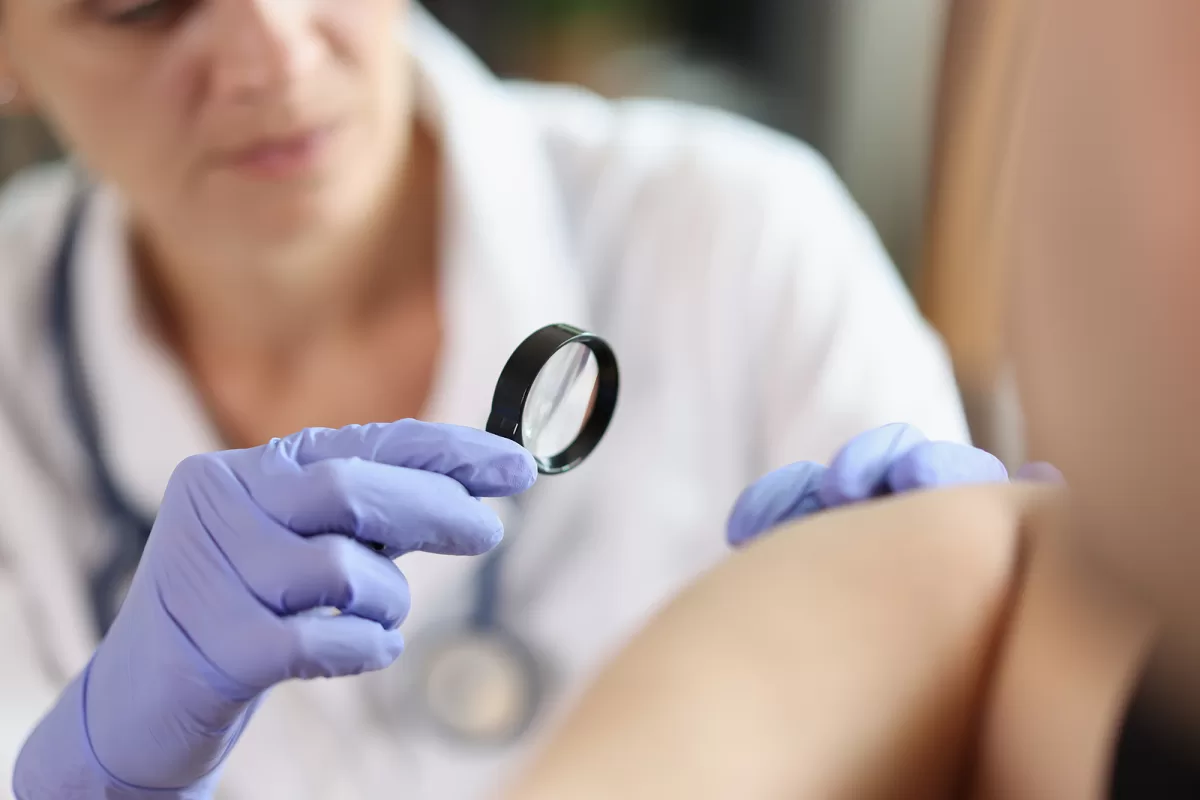Actinic keratoses are scaly patches of skin that grow slowly and appear more frequently after age 40. The only true way to prevent them from developing is by minimizing exposure to UV radiation from the sun and tanning beds. Since the cause is often exposure to the sun, they are sometimes called solar keratosis. There is a small risk that this skin condition can turn into skin cancer (about a 5-10% chance). Even without this risk, many patients seek a way to remove AKs to improve their appearance.
AKs and Skin Cancer
Actinic keratosis is a sign of sun-damaged skin. Even if a particular AK does not turn into skin cancer, it may be a sign that the skin has been affected by UV radiation to the point where skin cancer is a risk. It is important to always see your dermatologist if you have actinic keratosis, even if you think it is harmless. Although often harmless, they are not merely a cosmetic issue but could be a sign of something more serious.
How Common is Actinic Keratosis?
AKs are one of the most common complaints patients take to their dermatologist. At least 58 million Americans are estimated to have at least one spot of actinic keratosis. As far as pre-cancerous lesions go, AKs are the most common. Many people are unaware that they have one on their body, so they do not seek out the help of a dermatologist.
Sun Protection
Sun protection is important to avoid the formation of actinic keratosis. This includes wearing broad-spectrum sunscreen (at least 30 SPF) and sun protection like a broad-brimmed hat. The development of AKs is not limited to sun exposure, however. Many people who use tanning beds also are at a high risk of developing this and other skin conditions. Damage to the skin from UV exposure tends to accumulate over time. Regular, short-term exposure over many years can build up and lead to skin cancer or precancerous growths like AKs.
Compounded Treatments for Actinic Keratosis
Compounded treatments for actinic keratosis include a variety of creams that can have combinations of ingredients that are not commercially available. These creams not only improve the appearance of the skin but have been shown to effectively reduce the risk of developing skin cancer years after removal.
Some possible compounded formulations include:
- 5-Fluorouracil 0.5%, Salicylic Acid 10% Cream: Fluorouracil inhibits cell growth so that actinic keratoses do not develop into skin cancer. Salicylic acid is a keratolytic that removes the top layer of skin so that fluorouracil can be more effective. Usually, the cream is applied to the AK once daily until it is cleared.
- Calcipotriene 0.005%, 5-fluorouracil 5% Cream: 5-FU is used at a higher concentration in this cream. Calcipotriene is a form of vitamin D that also slows the growth of skin cells. This cream has been shown to work rapidly, and results are often noticeable within days. In one study, this combination resulted in a significantly higher complete clearance of AKs compared to a control group (62% vs. 8%).
Articles
Topical Combination Treatment Significantly Reduces Skin Cancer Risk – USPharmacist.com

